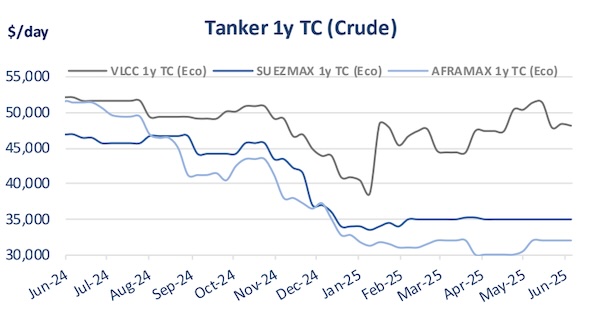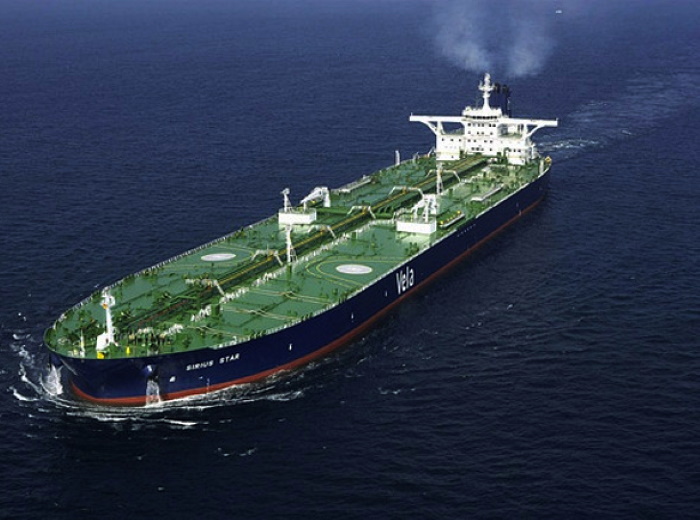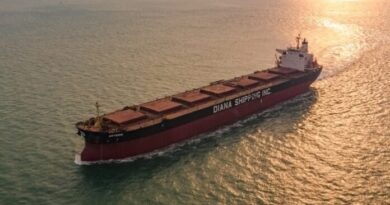An Ageing Tanker Fleet Could Limit Future Supply

The tanker fleet is ageing and this is undeniable, despite the increased pace of newbuilding contracting over the past year. Taking into account the expected increase of demolition activity in the future, more orders needs to take place, if a tonnage supply shock is to be avoided.
In its latest weekly report, shipbroker Xclusiv said that “the global tanker fleet is confronting a significant aging challenge across all size segments as it evolves toward 2029. Despite a robust orderbook aimed at fleet renewal and expansion, the rapid growth in the number of older vessels is reshaping the age profile in a manner that warrants close scrutiny by market participants and industry stakeholders”.

Source: Xclusiv
According to Xclusiv, “as of 2025, the active tanker fleet comprises 7,735 vessels, with 1,366 units aged over 21 years, representing approximately 17.6% of the fleet. However, this aging burden is not evenly distributed across vessel sizes. Handy/MR1 tankers exhibit the highest aging ratio at 34%, with 279 of 829 vessels over 21 years. Small tankers follow, with 19% of their 1,878 vessels falling into this older category. The MR2 segment maintains a relatively younger profile, with only 11% aged over 21 years. Other segments such as Panamax/LR1, Aframax/LR2, Suezmax, and VLCC/ULCC show moderate aging levels between 16% and 17%. By 2029, the fleet is projected to expand modestly to 8,948 vessels, yet the number of vessels older than 21 years more than doubles to 3,023, accounting for nearly 34% of the fleet—almost twice the proportion seen in 2025. The aging intensifies considerably across all segments, with the Handy/MR1 class facing a particularly acute challenge, where 56% of the fleet will be over 21 years old, marking a 22 percentage point increase over 2025. Small tankers also face substantial aging pressures, with the proportion of vessels older than 21 years rising to 37%. The MR2 segment’s aging share more than doubles to 27%, while the Panamax/LR1 segment shows a notable increase to 46%, positioning it as the second most aged class by 2029. Aframax/LR2, Suezmax, and VLCC/ULCC segments also experience meaningful aging, rising to 31%, 25%, and 26%, respectively”.

“This data underscores that smaller tanker segments—particularly Handy/MR1 and Small tankers—carry the heaviest aging burden and experience the fastest growth in older tonnage. This likely reflects an older baseline fleet and potentially slower renewal rates relative to other segments. Meanwhile, mid-sized and larger tankers also exhibit steady aging increases, highlighting a widespread industry trend. The pronounced aging within Handy/MR1 and Panamax/LR1 tankers is especially critical, as these segments may face accelerated scrapping or will require aggressive replacement to maintain operational competitiveness and compliance with increasingly stringent environmental and safety regulations. By 2029, charterers are expected to increasingly prefer younger vessels due to their improved fuel efficiency and superior environmental performance. Older tankers, particularly those exceeding 21 years of age, will likely struggle to meet evolving chartering criteria as fuel consumption inefficiencies and environmental non-compliance become more consequential in contracting decisions”, the shipbroker said.

Source: Xclusiv
Xclusiv concluded that “despite a sizable orderbook consisting of 1,213 vessels scheduled for delivery through 2029 across all size classes, the rapid increase in aging tonnage highlights the imperative for newbuild deliveries to keep pace not only with fleet growth but also with the accelerated demolition of older vessels. Any mismatch between demolition and deliveries could lead to supply-side pressures, exacerbated further by tightening environmental regulations that may hasten the phase-out of older, less efficient ships”.
Nikos Roussanoglou, Hellenic Shipping News Worldwide




